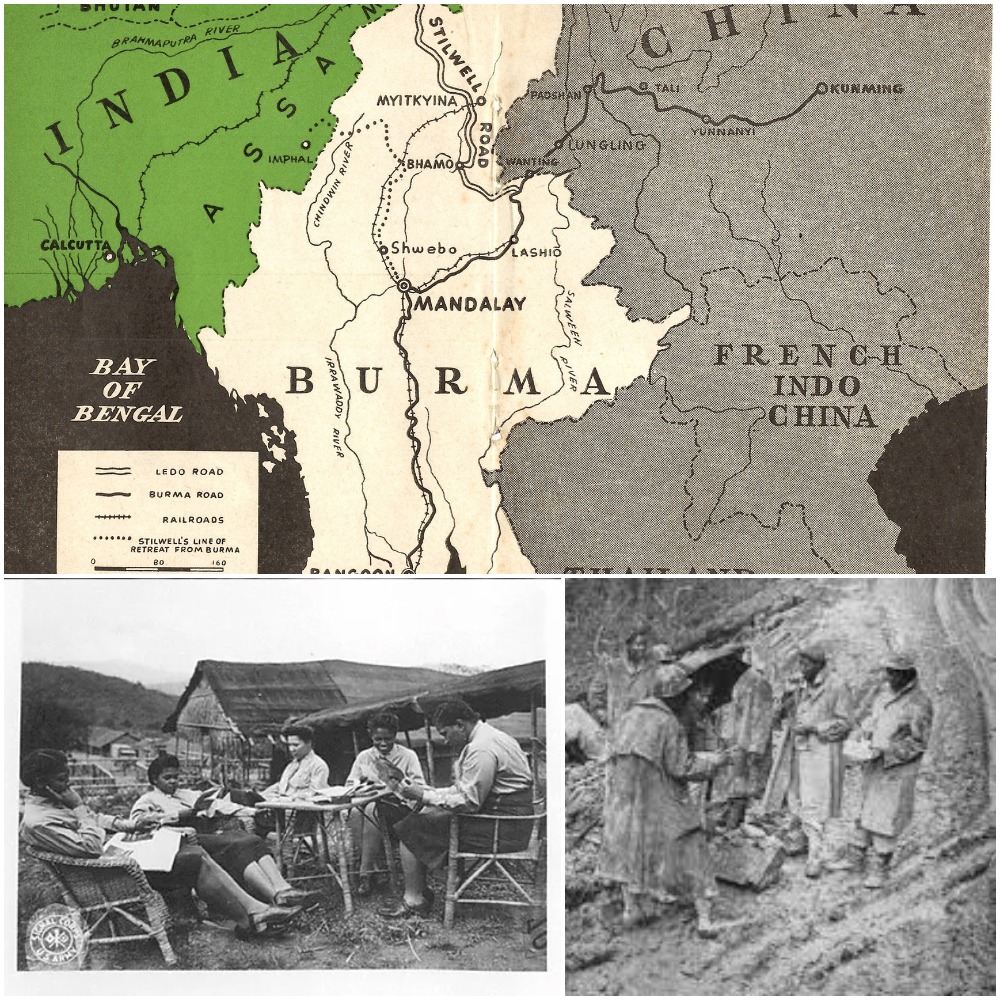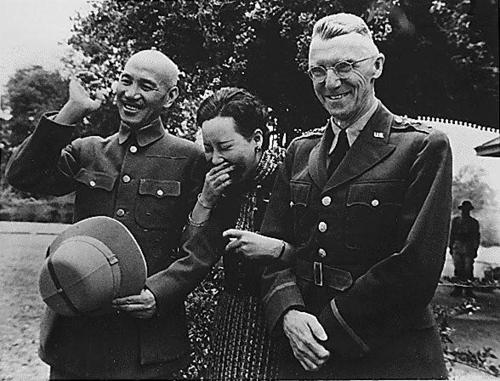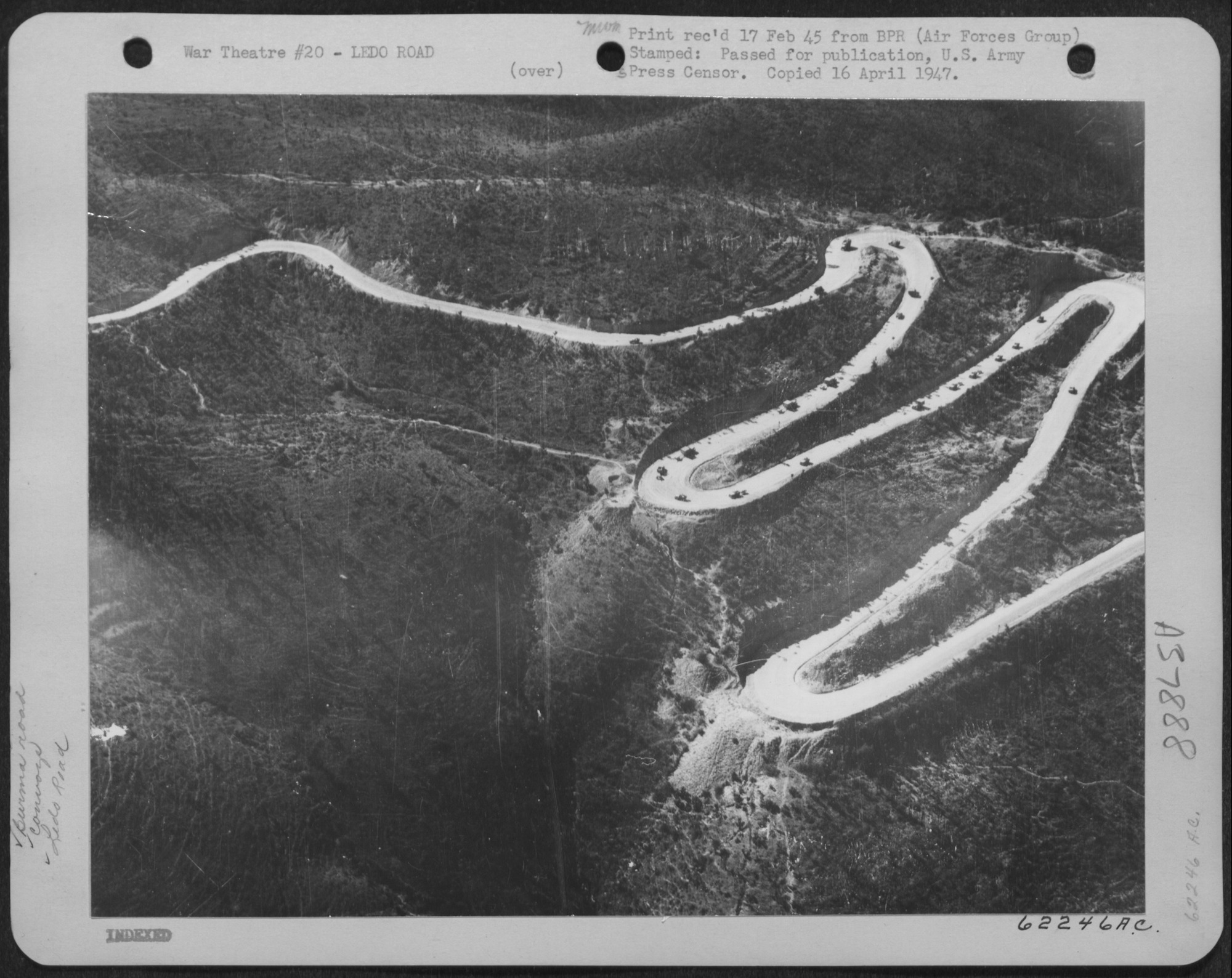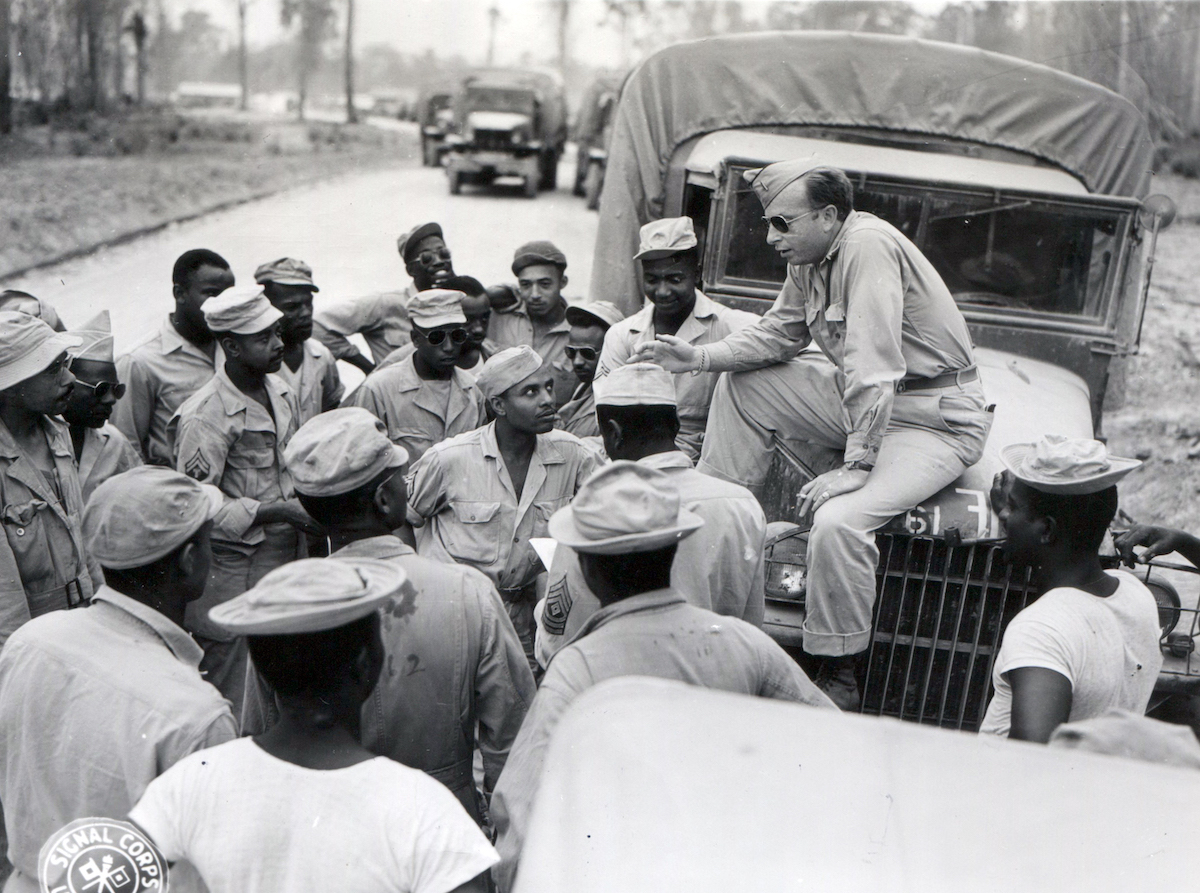



28 January 1945
Ledo or Stillwell Road
room Myanmar
people Chiang Kai-shek Joseph 'Vinegar Joe' Stillwell
The "Ledo" or "Stillwell" Road was completed on 28 January 1945. The road linked Ledo in Assam with Kunming in Yunnan via the Kachin Hills. It was the first and is still the only modern road to connect India and China across Myanmar.
The idea for the road began in 1942 after Japanese forces seized Rangoon and cut the old "Burma Road". The Burma Road began in Rangoon and went via Mandalay and Lashio to Yunnan. It was the critical lifeline for Chinese nationalist armies fighting the Japanese in the interior of China. (The Japanese then held the coast and the Chinese regime of Chiang Kai-shek had moved its capital to Chongqing). Hundreds of lorries carrying war supplies used the Burma Road every day. The new "Ledo Road" was meant to provide an all new land connection. From 1942-45 the Allies depending on an airlift over the Himalayas that had managed to deliver 650,000 tonnes of supplies but at great cost, with nearly 600 airplanes crashing, most in Burma.
The Ledo Road was also named the Stillwell Road after General Joseph Stillwell ("Vinegar Joe"), who commanded Chinese divisions in Burma.
The Ledo Road was built by 15,000 Americans as well as 35,000 others, mainly Indians, Chinese, and Burmese. The majority of Americans were African-Americans, who often suffered harsh and discriminatory treatment at the hands of their white officers. By 1945 there was also an African-American medical unit, mainly female nurses, who cared for Indian, Chinese, and Burmese soldiers as well as Americans. When told to reserve special places for white soliders, their unit commander Dr Wilbur Strickland refused, saying all people suffered pain equally.
An archival map showing the route of the Ledo/Stillwell Road; photographs of African-Americans serving in the Kachin Hills; and Generalissimo and Madame Chiang Kai-shek with General Joseph Stillwell at Maymyo, Burma, April 1942 (US Army photo). The aerial shot taken by the US Air Force in February 1945 shows the first convoy making its way around the hairpin turns on the Ledo Road, en route to Kunming, China; and men of the 418 Quartermaster Battalion (an all African-American trucking unit) being briefed by the Commanding Officer of the 3961 QM Truck Company on running a convoy along the Ledo Road in March 1945.